The first race in Canada since 2019 has been set-up beautifully by a dramatic qualifying session, and there are plenty of drivers out of position, so let’s take a look at the different strategic options available to the teams on race day in Montreal.
What’s the quickest strategy?
As usual, the teams want to limit the number of pit stops they make, and in Canada the one-stop strategy is possible – but from two different routes.
The most likely choice for those at the front is to start the race on the medium tyre, as it has good life but doesn’t give up too much in performance terms on the opening lap. By running a first stint of between 22 and 28 laps – and ideally looking for a pit window to come back out in clear air – then switching to the hard compound would allow a relatively comfortable run to the end of the race.
READ MORE: Verstappen braves wet conditions to claim Canadian GP pole ahead of sensational Alonso
That’s because this weekend’s hard compound is the C3 tyre – the middle of the Pirelli range – which is a good, consistent tyre that all of the teams are able to make work in the right conditions.
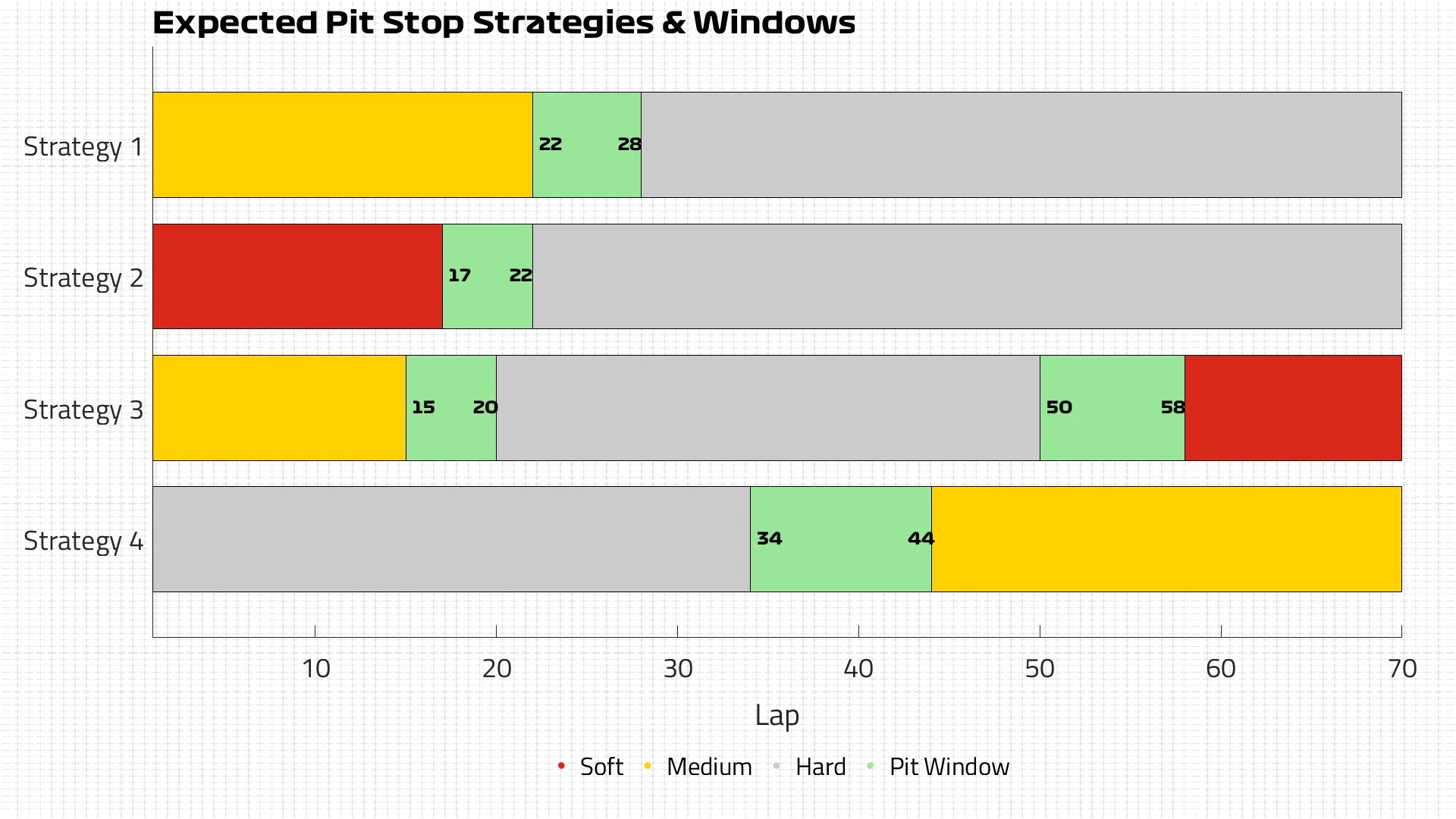
How about a different option for the top ten?
The other one-stop strategy that is tempting for those nearer the sharp end is to use the soft compound for the opening stint. This would give good traction off the line and on the opening lap – especially important in Canada – and a performance advantage over one lap in the first part of the race.
There would need to be some management of the tyre, but the softs could run to at least Lap 18, after which point anything else is a bonus before switching to the hard compound for the rest of the race.
Of course, the earlier that stop is made then the more drivers will be looking to conserve the tyre to ensure it can do a stint of around 50 laps.
The challenge with the soft could be graining, especially with the cars at their heaviest with a full fuel load and on a potentially low grip track. That’s because the rain from Saturday will have washed away the rubber that was put down on Friday, leaving grip levels lower than you’d normally expect after a full weekend of running. But more on how temperatures could affect that in a bit…
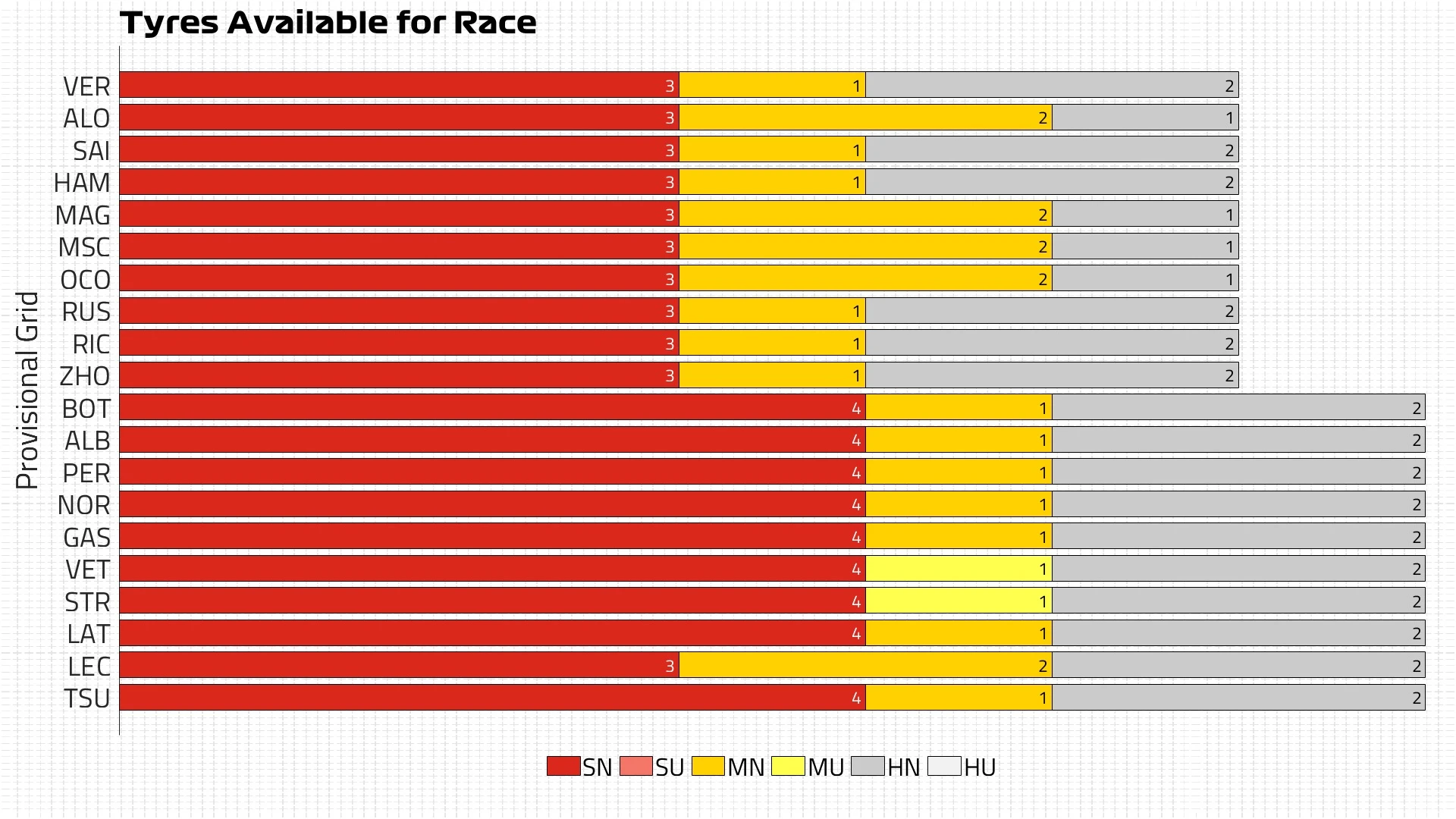
What are the options for the bottom half of the field?
There are a few alternatives to those starting out of position in Montreal, including the likes of Sergio Perez in 13th and Charles Leclerc on the back row.
For these two cars that have a performance advantage over most of those ahead of them, starting on the hard compound is a realistic option. While there will be a slight lack of grip compared to the other compounds at the start, and warm-up could be a challenge, the outright car pace should compensate for that.
The upside is a long first stint that will ensure clear air once other cars make their pit stops, allowing the likes of Perez and Leclerc to unleash their true pace if they are struggling in traffic. It would also provide a wider pit window opportunity in case of a Safety Car or Virtual Safety Car interruption, with a switch to medium tyres coming between Lap 34 and 44, or softs if they can get closer to lap 50 and want to chase an aggressive final stint.
That’s not the only option that Red Bull and Ferrari will be considering, though, but it’s more likely that other teams might be looking at a two-stop strategy as something to differentiate themselves from those around them.
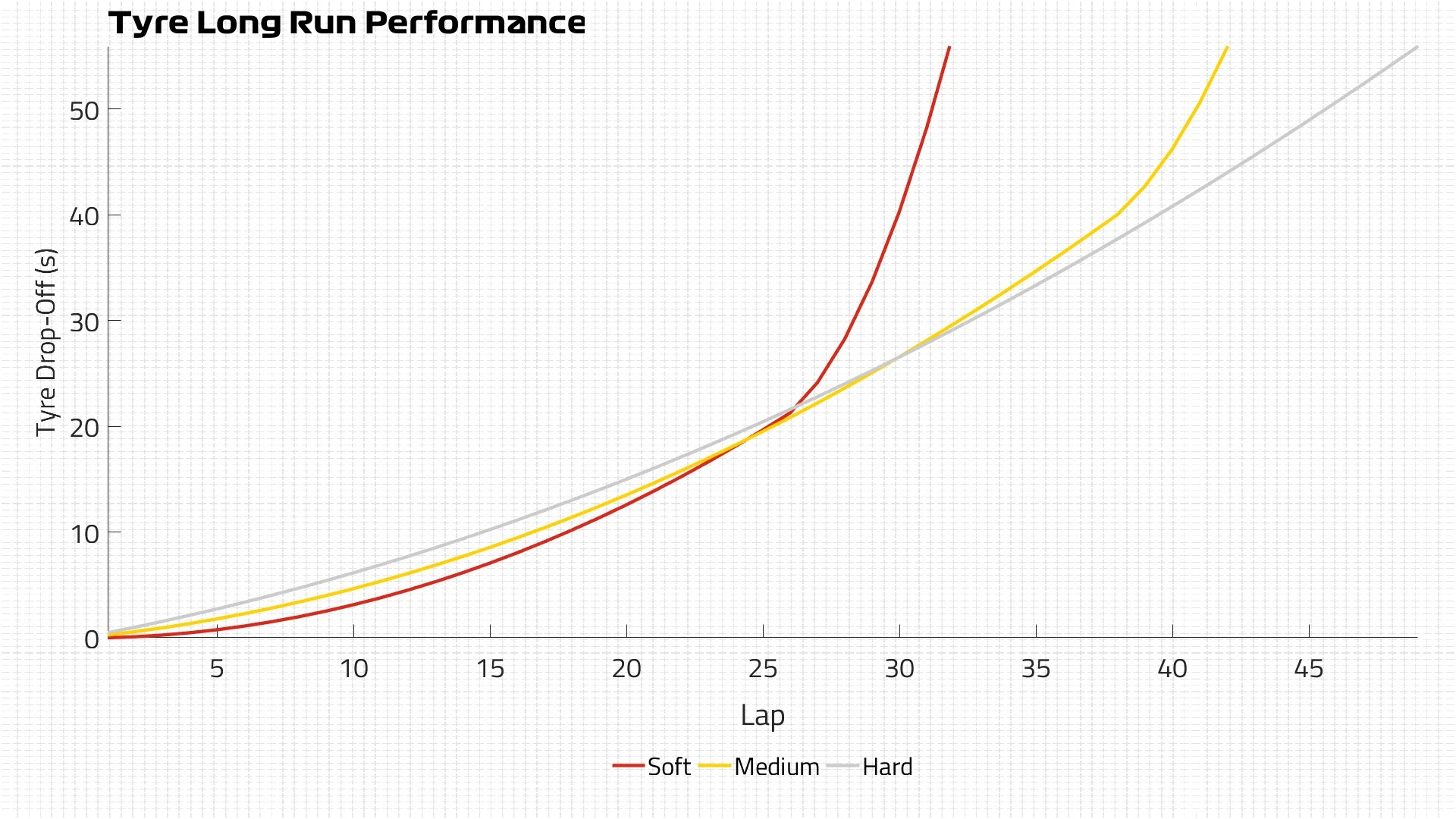
Starting on the medium compound, a shorter first stint followed by a switch to hards would then open up the chance to either return to mediums or finish on softs, with Safety Car periods also making the two-stop more of a possibility.
The same scenario could be run in the order of soft-hard-medium or soft-hard-soft, with both of those not dependent on the tyre compounds a team has left available.
FACTS AND STATS: Alonso grabs his first front row start in a decade
Because FP3 was wet, teams had much more flexibility when it came to the tyres they had to return at the end of running, and so it’s only Alpine and Haas that don’t have two sets of hards available, allowing the rest of the grid to chase the ideal one-stop strategy and then pit for a second time if a Safety Car is convenient (as a stop under Safety Car will cost them under 10 seconds, rather than over 17).
The flip side of those selections is only Alpine and Haas could run two stints on medium tyres, aside from Charles Leclerc who has all options open to him with two sets of both the mediums and hards.
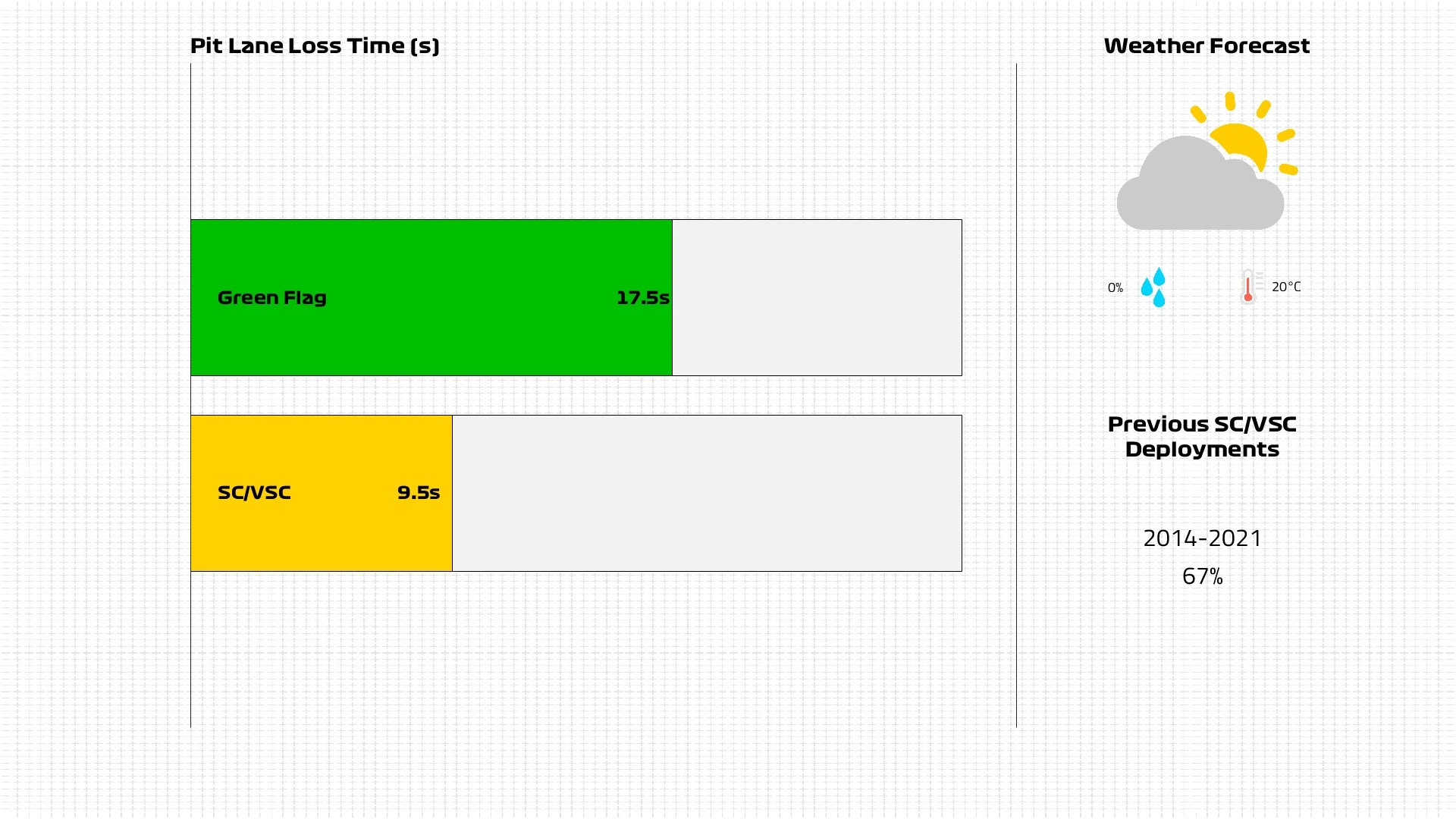
Wait, but what’s the weather doing?
The teams have been faced with some pretty dramatic swings in conditions so far this weekend, with torrential downpours and storms giving way to warm and sunny weather throughout Friday’s track time.
After the fully wet Saturday, the race is looking set fair with a forecast of temperatures around 20C, which is nearly double what was seen during qualifying. But it’s still cooler than Friday was, and with the track low on grip after all the rain, that can pose a challenge for the drivers.
Low grip and lower temperatures can lead to graining because the tyres slide on the track surface, leading to small bits of rubber tearing off from the tyre and then immediately sticking to it again, reducing the contact patch and grip even further. It’s more likely to be an issue earlier in the race than later, as grip levels start to increase from more rubber being put down on track and the fuel load burning off.
As an added challenge, the race could see wind gusts of up to 50 kph, which can destabilise a car if one hits at the wrong time, as seen with both Carlos Sainz and Max Verstappen going off in Spain earlier this season.
Next Up
Related Articles
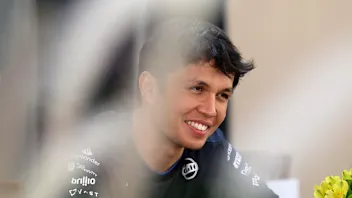 Albon names moment he's most proud of from 2025
Albon names moment he's most proud of from 2025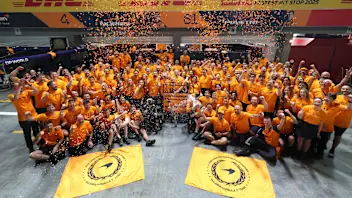 PalmerJolyon Palmer picks his top performers in 2025
PalmerJolyon Palmer picks his top performers in 2025 End Of Year Reports 2025Red Bull’s best and worst moments from 2025
End Of Year Reports 2025Red Bull’s best and worst moments from 2025.webp) End Of Year Reports 2025Kick Sauber’s best and worst moments from 2025
End Of Year Reports 2025Kick Sauber’s best and worst moments from 2025 Watch as the F1 grid does Secret Santa for 2025
Watch as the F1 grid does Secret Santa for 2025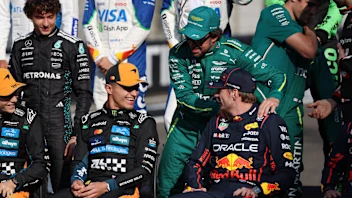 ExclusiveThe F1 team bosses choose their top 10 drivers of 2025
ExclusiveThe F1 team bosses choose their top 10 drivers of 2025

.webp)